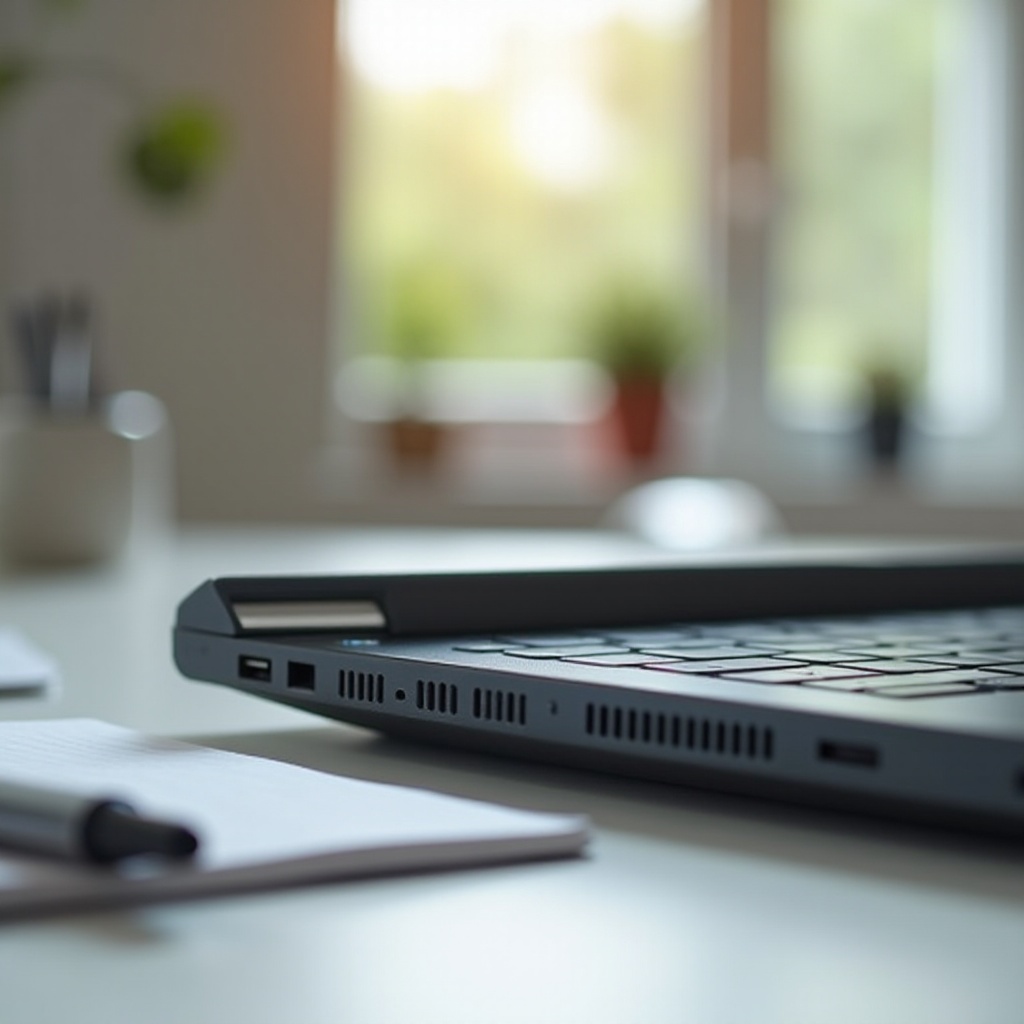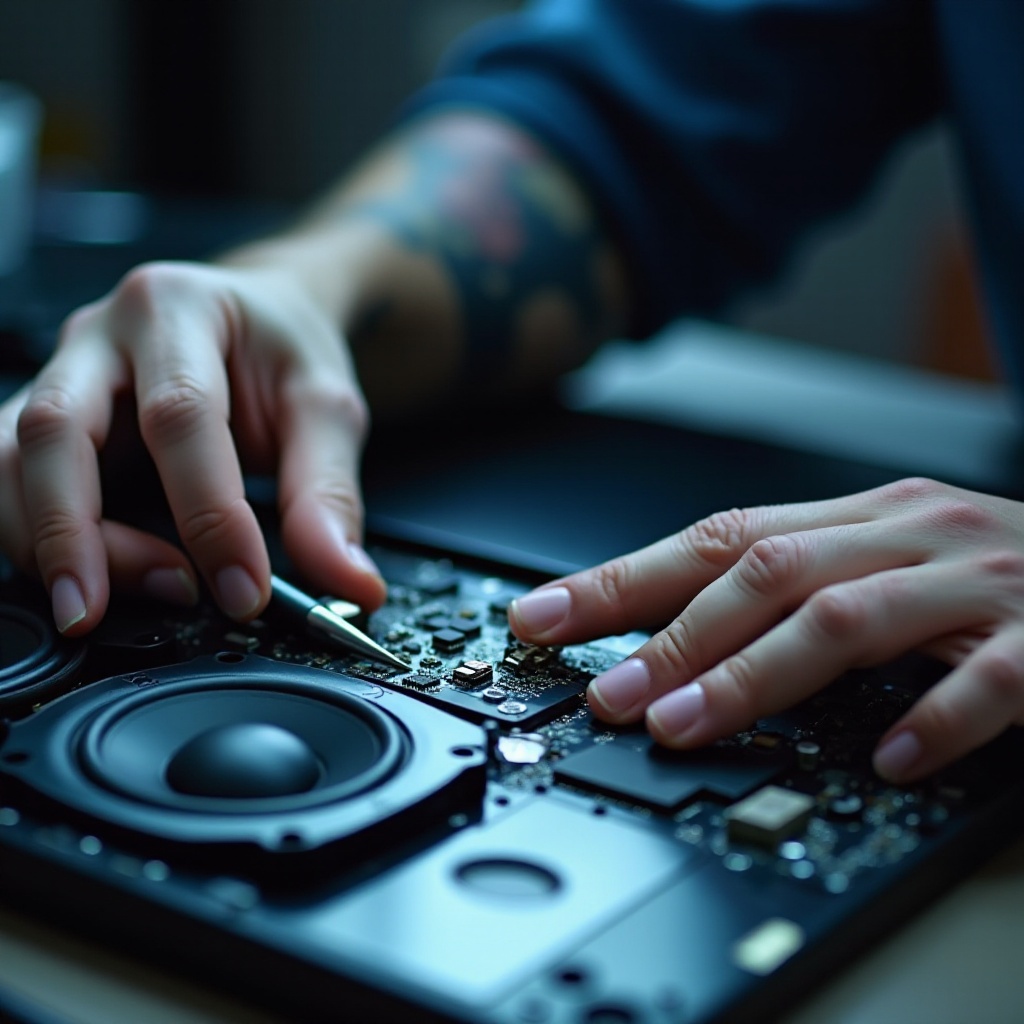Introduction
Experiencing problems with your laptop speakers can be frustrating, especially when you need them for important tasks like video conferencing or entertainment. Fortunately, most laptop speaker issues can be resolved with some simple troubleshooting steps. This guide aims to help you understand the common reasons why your laptop speaker does not work and provide clear solutions to fix it.

Common Causes of Laptop Speaker Issues
Before diving into solutions, it’s essential to understand what might cause laptop speaker problems. Knowing the root cause can make troubleshooting quicker and more effective.
Software Interference
Software interference is a frequent cause of audio problems on laptops. This can occur when applications or operating systems conflict with audio settings or drivers. Sometimes, new software installations or updates can create these conflicts, leading to speaker issues.
Faulty Drivers
Drivers are crucial for the proper functioning of hardware components, including speakers. Outdated, corrupted, or missing drivers can cause your laptop speakers to stop working. Regularly updating and maintaining driver software is essential for avoiding such issues.
Hardware Problems
Hardware issues are another possible reason for speaker failure. This can include problems with the internal speaker components, physical damage, or loose connections. In some cases, the internal speaker may be defective or broken, necessitating a replacement.
Understanding the different causes can help you diagnose and address specific problems more effectively. Let's move on to the basic troubleshooting steps.
Basic Troubleshooting Steps
Addressing laptop speaker issues often begins with simple troubleshooting steps. These basic checks can quickly resolve many common problems.
Check Volume and Mute Settings
First, ensure that your laptop's volume is turned up and that it is not muted. Sometimes, the simplest solutions are the most overlooked:1. Locate the volume icon on your taskbar and click on it.2. Adjust the volume slider to an appropriate level.3. Ensure the mute button is not activated.
Restart Your Laptop
Restarting your laptop can resolve minor software glitches that might be affecting the speakers:1. Save any open work.2. Restart your laptop from the Start menu.
Ensure Speakers Are Not Disabled in Sound Settings
Sometimes, the issue lies within the sound settings of your laptop:1. Right-click on the volume icon on your taskbar.2. Select 'Open Sound settings.3. Check the output device to ensure your laptop speakers are selected.
After covering these basic steps, if your laptop speaker still does not work, it's time to delve deeper into software and driver solutions.
Software and Driver Solutions
Software and driver issues are common culprits behind non-functional laptop speakers. Addressing these can often restore sound.
Updating Audio Drivers
Keeping your audio drivers up-to-date is crucial:1. Open Device Manager by right-clicking the Start button.2. Expand the 'Sound, video, and game controllers' section.3. Right-click on your audio device and select 'Update driver.4. Follow the prompts to search for and install updated drivers.
Rolling Back Audio Drivers
If a recent update caused the issue, rolling back to a previous version might help:1. Open Device Manager.2. Right-click on your audio device and select 'Properties.3. Go to the 'Driver' tab and click 'Roll Back Driver.
Using Windows Sound Troubleshooter
Windows has built-in troubleshooting tools that can detect and fix audio problems:1. Open Settings and go to 'Update & Security.2. Select 'Troubleshoot' from the sidebar.3. Click on 'Playing Audio' and run the troubleshooter.
These steps should help resolve most software or driver-related issues. If the problem persists, further hardware checks may be necessary.
Advanced Hardware Checks
Sometimes, the issue could be more hardware-related. Performing some advanced hardware checks can help identify and fix these issues.
Checking Physical Connections
Ensure all physical connections are secure:1. Check if the laptop's internal speaker connections are intact.2. If using external speakers, ensure they are properly connected.
Inspecting Internal Speaker Hardware
If you're comfortable with hardware:1. Open the laptop case.2. Check if the internal speakers are securely connected and free from damage.
Trying External Speakers or Headphones
Using external audio devices can help determine if the issue lies with the internal speakers:1. Connect external speakers or headphones to your laptop.2. Check if the sound works through these devices.
If these hardware checks do not yield results, the problem might be more system-specific. Let’s explore solutions tailored for different operating systems.

Operating System Specific Fixes
Different operating systems have unique settings and tools for troubleshooting audio issues. Tailoring your approach can yield better results.
Windows Sound Settings
For Windows users:1. Open Sound settings from the Control Panel.2. Ensure the correct playback device is selected, and test the sound.
MacOS Audio Troubleshooting
For MacOS users:1. Go to System Preferences and select 'Sound.2. Ensure the correct output device is selected.3. Test sound using Audio MIDI Setup.
Linux Audio Configuration
For Linux users:1. Open the terminal and use commands like 'alsamixer' to manage audio settings.2. Ensure the correct device and sound levels are configured.
By now, you should have a clearer idea of where the problem lies. Finally, let’s discuss how to prevent future issues.
Prevention Tips
Preventing laptop speaker issues involves regular maintenance and care:1. Keep your software, drivers, and operating system updated.2. Avoid physical damage by handling your laptop with care.3. Regularly clean speakers and audio ports.

Conclusion
Fixing laptop speakers that are not working can often be done with simple troubleshooting and some attention to detail. By following these steps, you can identify the root cause and take appropriate action to restore sound to your laptop.
Frequently Asked Questions
Why are my laptop speakers not working but headphones are?
This often occurs due to incorrect sound settings. Ensure that the default playback device is set to your laptop speakers rather than headphones when they are not plugged in.
How do I reset my laptop speakers?
Resetting your laptop speakers can be done by:1. Going to Sound settings.2. Disabling and then re-enabling the speakers.3. Restarting the laptop.
Can a virus cause laptop speaker problems?
Yes, malicious software can interfere with audio drivers and settings. Running a full system scan with updated antivirus software can help detect and remove such threats.
